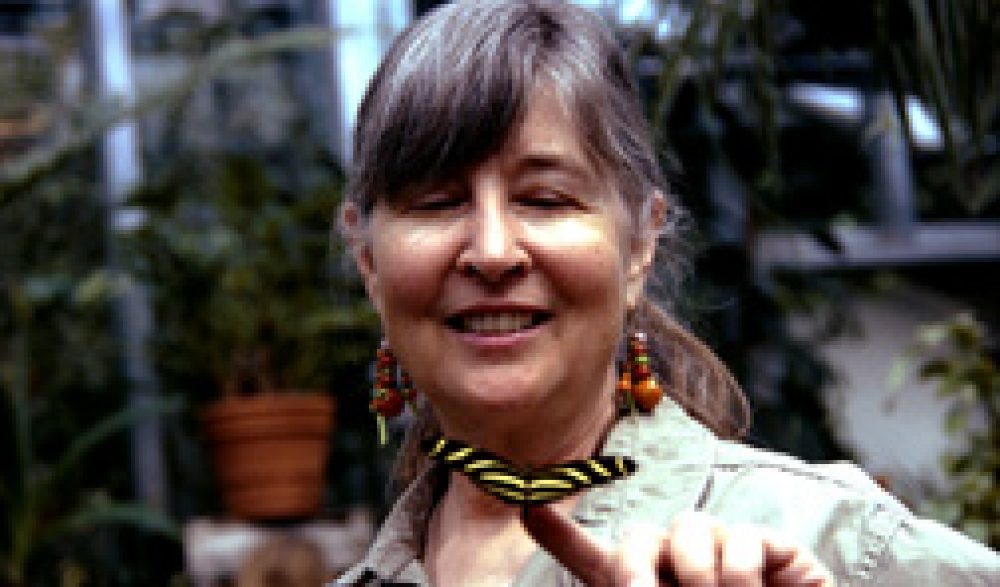I was not always alone, especially during our first year in Pakistan. It seems amazing to me now that not only were the three oldest Vroon children—Marty (Marchiene), Andy and Judy—almost exactly the same ages as we three young Blocksmas, but we were matched in gender as well. When our family arrived in Lahore, each of us children immediately acquired a built-in playmate. It was synchronicity at its most fortuitous!
Unpacking Mrs. Bozwinkle’s curriculum, Mother set up a little school for the four older children: Marty, Andy, Dewey and me. Being fully equipped with textbooks, however, was not enough—how should she teach them? As was her habit, my mother consulted the best authority she knew—Justina Enss, an art teacher in the Detroit public schools and one of her seven sisters. I can’t remember if I had even yet met Aunt Tini (as we children called her), but I knew her from the unusual abstract paintings which hung on our walls. I still thought of Mrs. Bozwinkle as my fairy godmother, but Aunt Tini soon occupied the highest pedestal in my personal pantheon: Goddess of Creativity and Art.
Although my mother denies that Aunt Tini suggested anything more than how (or how not) to teach art, my mother’s educational approach seems to me perfectly described on a current (2017) Montessori website:
Montessori is a method of education that is based on self-directed activity, hands-on learning and collaborative play. In Montessori classrooms children make creative choices in their learning, while the classroom and the teacher offer age-appropriate activities to guide the process. Children work in groups and individually to discover and explore knowledge of the world and to develop their maximum potential. Above all, Montessori classrooms at all levels nurture each child’s individual strengths and interests. Montessori education encourages children to explore their world, and to understand and respect the life forms, systems and forces of which it consists. https://montessori-nw.org/what-is-montessori-education/
Maria Montessori’s controversial teaching methods came to United States in 1931, but they were not well-known until the Sixties. Was Aunt Tini so avante garde that she had already adopted them in 1949? Mother, now 97, says no, but I still wonder.
Wherever she got her ideas, Mother taught Dewey, Marty, Andy and me with the verve of a devoted educator free to do as she pleased: No syllabus to follow, no MEAP tests to prepare for, no principal watching, no school board oversight. Mother’s approach to education was possibly as wild and creative as she would ever allow herself to get, second only to agreeing to bring the family to that war-torn country in the first place! After dutifully filling out our notebooks or reading our texts, her students played arithmetic in the yard, banged on drums and triangles and sang. The living room was cleared of furniture so we could dance. We filled two large hallway walls, along which we were allowed to roller skate, with murals so tall we had to stand on chairs to put heads on the Eskimos. Marty and I, both better with words than paint, confined ourselves to snowfields, penguins and igloos, while Andy and Dewey jammed their wall with elephants, lions and tigers, monkeys leaping through a tangle of jungle botany. Children’s drawings were art, insisted our teacher; coloring books were trash. Culture and creativity ruled our school, our house and our lives. And although friendly competition thrived, Mother never gave us tests or grades, careful that no one of her students should think herself smarter than another.
Many years later, during a 1990 trip around the Great Lakes for my Fourth Coast book, I came upon a young woman sitting by a scarlet kayak on a southern shore of Lake Superior. She had paddled alone around the north side that large lake, Kim said, and it was not the first Great Lake she had conquered. As we sat in the sand next to her boat watching the sun set, she told me that she was a Montessori kid, and that while Montessori kids knew how to learn and explore their potential, they never seemed to fit very well in the world.
I knew exactly what she meant—my elementary school education has had a similar effect. Montessori! That’s how Mother had been teaching us, whether she knew it or not! I’d never made that connection before. Later, back in The States, we all tested above our grade levels, but there were also unintended consequences: Although Mother appreciated and facilitated art, not making art herself, she didn’t understand that to do original work, you have to see in an original way, which often means living apart from even the family status quo. All four of her children have become artists, writers, and/or musicians. And all of us have colored wildly—sometimes, heartbreakingly—outside her social and religious lines.
MEMOIR WORKSHOP: My writing rhythm is becoming apparent—I hyper-focus, writing intensely for a week or two, ignoring dishes, piles of books, art projects and editing requests, until I have to shift to catch-up mode before my listing life falls in a heap. Now and then I even allow myself what I think of as a Retirement Day, during which I may do little more than read a good book and walk the dog. Presently, I am writing again. What fun! So be not concerned if I vanish for a few weeks—I’ll be back!
